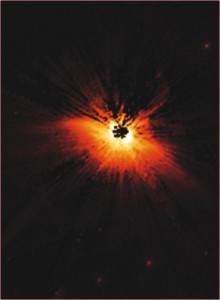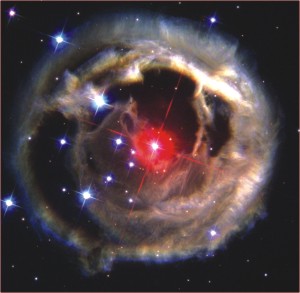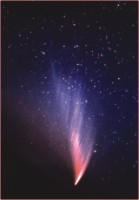| Spotlight
Creating universe in laboratory
Dr Binoy Barman
 ALL preparations are complete and the stage is ready. Now, scientists will conduct the most delicate scientific experiment of all time on earth. They will observe what happens when subatomic particles collide, creating the condition of big bang in laboratory. As planned, the first beam of protons was released in the laboratory on 10 September 2008, as a precursor to the final experiment, which was cheered by the science-oriented population across the world. If the experiment is successful, it will provide answer to many questions still unresolved regarding the structure and origin of the universe that we inhabit. ALL preparations are complete and the stage is ready. Now, scientists will conduct the most delicate scientific experiment of all time on earth. They will observe what happens when subatomic particles collide, creating the condition of big bang in laboratory. As planned, the first beam of protons was released in the laboratory on 10 September 2008, as a precursor to the final experiment, which was cheered by the science-oriented population across the world. If the experiment is successful, it will provide answer to many questions still unresolved regarding the structure and origin of the universe that we inhabit.
For the experiment, the scientists have built a machine called Large Hadron Collider (LHC) at the European Organisation for Nuclear Research (CERN) laboratory situated on the French-Swiss border where about five thousand scientists and engineers from different countries work. The machine has been built with a cost of about $10 billion for about 14 years. It is the most sophisticated particle accelerator ever built -- the biggest and most expensive science machine on earth. The machine will accelerate protons close to the speed of light inside a 27-kilometre circular underground tunnel when the scientists will note the results of the great collision. The machine marks the unprecedented engineering achievement of human race.
The CERN experiment targets to pierce the heart of cosmos -- both microcosm and macrocosm. The knowledge of microcosm has been gained gradually and slowly with the untiring efforts of the physicists. During the last couple of centuries it has been discovered that all material objects, at the basic level, are made of molecules which are again made of atoms. Atoms are composed of electron, proton and neutron, called subatomic particles (the second two are labelled as baryons which form the nucleus of atom). These are even supposed to be composed of more fundamental particles (sometimes called elementary particles as these cannot be further divided) like quarks and leptons. Besides these, there are antimatter and dark energy in nature whose properties are not yet fully perceived. It is reckoned that all the elementary particles along with antimatter and dark energy were created in the big bang about 14 billion year ago. The elementary particles flew around freely amid immense heat generated by the great explosion; they crashed into each other and formed bigger particles, which ultimately made matter, first organic and then inorganic, with the gradual fall of temperature.
The big bang was the beginning of the universe. After the big bang, huge collection of helium and hydrogen atoms, arising from the bond of electrons, protons and neutrons, gave rise to stars and planets. Stars and planets together form solar systems and billions of stars and/or solar systems together form galaxies, which again group in clusters. The universe contains billions of clusters, assembled in numerous superclusters. Stars are the prime source of light in the universe.
Some stars at the final stage of burning explode in supernova and some end up as black holes, white dwarfs or red giants. The birth and death of stars is a regular cosmic event happening over long span of time. Our sun and solar system emerged about 4-5 billion years ago and passing its mid youth. In brief, this is the macrocosm. The macrocosm started from a 'singular point' sometimes called a 'primeval atom'. The burst of 'singularity' into 'multiplicity' also heralded the beginning of time and space -- time which is still flowing and the space which is still expanding. Space provides three dimensions and time the fourth dimension. The CERN experiment has great implications for the theories of macrocosm. It seeks to find out even other dimensions of the universe supposedly hidden in tiny objects.
 On the other hand, in microcosm, there are still puzzles. How and why do the elementary particles come close to each other to form bigger units and gather mass? Some scientists propose the theory of Higgs Boson to explain this phenomenon. Higgs Boson (sometimes called 'God particle') is believed to produce a field that interacts with particles and gives them a property we interpret as mass. But its existence is still controversial. The CERN experiment can probably prove or disprove the existence of enigmatic God particle, putting an end to the controversy. On the other hand, in microcosm, there are still puzzles. How and why do the elementary particles come close to each other to form bigger units and gather mass? Some scientists propose the theory of Higgs Boson to explain this phenomenon. Higgs Boson (sometimes called 'God particle') is believed to produce a field that interacts with particles and gives them a property we interpret as mass. But its existence is still controversial. The CERN experiment can probably prove or disprove the existence of enigmatic God particle, putting an end to the controversy.
It is a matter of intense debate whether the universe came into being through creation or through evolution. The first position leads to creationism and the second to mechanism. According to creationism, some superpower created the universe at will in his own way. On the other hand, mechanism claims that the universe is self-existing and it was not created by any entity. Judged logically, creationism falls into the fallacy of causal chain: if somebody created the universe, who created him? There is no answer. Moreover, the universe is found to be infinite. How can such an infinite thing be created by any entity, when it is not possible for anything to remain outside the 'infinite'? Most of the religions of the world, however, preach some form of creation stories.
As regards mechanism, it is also difficult to perceive with the present capacity of human brain how something can self-exist. It is only a theoretical construct that the universe is self-produced and self-operated. It is a scientific belief just like the religious one, without any concrete proof. Mechanism emphasises the interplay of natural forces which would account for all phenomena in the physical universe. Mechanism shuns all religions myths and attempts to present a reasoned explanation of the existence and evolution of the universe.
One may choose to be either a creationist or a mechanist, as he/she wishes, to explain how the universe came into existence. None of the two doctrines, however, rules out the possibility of a big bang. Creationism brings forth the creator who might have caused the big bag out of his plan to create the universe. On the other hand, mechanism provides a mechanical explanation of the primordial explosion. It says the original mass of particles was so densely compact that it must explode according to natural laws. There was no intervention in the affair from outside.
It is curious that a section of scientists like Stephen Hawking supports the theory of 'intelligent design' to explain the workings of the universe. They claim that the big bang was staged in such a well planned way that it consequently gave rise to the universe which is perfectly balanced with all its energy and dark energy, matter and antimatter. That means the universe was designed by 'somebody'. We are not sure who this 'somebody' is. Religious minds tend to believe that this 'somebody' is God, as depicted in the holy scriptures, while others take it to be some 'very intelligent entity' (that might be much more intelligent than humans) but it should not be branded as God, at least in religious sense. May be, that entity/entities are so advanced in science and technology that they can initiate a big bang with some simple tricks. May be, our existing universe was created by them in a laboratory experiment conducted by them.
 Human beings on earth have started to experiment with the origin of the universe. Good news! It ushers in a new era of scientific progress and technological advancement. It is a bold step forward to resolve the mysteries of our own existence. This breakthrough might be followed by more experiments which will provide, we can expect, sure answer to the questions asked by humans since time immemorial. Human beings on earth have started to experiment with the origin of the universe. Good news! It ushers in a new era of scientific progress and technological advancement. It is a bold step forward to resolve the mysteries of our own existence. This breakthrough might be followed by more experiments which will provide, we can expect, sure answer to the questions asked by humans since time immemorial.
Hopefully, one day human beings will be able to fully understand the origin and structure of the universe. The scientists will expound it with precise mathematical equations. They will even be able to develop technology to create new universe themselves. Just a button push in the laboratory and the output is a universe. It sounds like magical Quranic phrase: 'Kun fa ya kun' ('Be and there is the world'). I suppose such technology will be just a piece of cake to our future generations possessing more powerful brains so that even the literate babies would create universe out of their play!
Aha! I remember a song of our national poet Kazi Nazrul Islam, who wrote with his excellent feat of imagination: “Khelichho e bishwa loye, birat shishu, anmoney. Proloy srishti tobo putul khela, nirojaney, prabhu, nirojaney.” (You, the great baby, are playing with this universe in an indifferent mood. The destruction and creation is your doll-play, my lord, in seclusion.) What a magnificent song! It is significant not simply spiritually but also scientifically. Nazrul's 'great baby' has technological savvy which entails a capability to create and destroy world. It is hard to believe that in remote future human babies will not be such wise kids who will play with doll universe created by them or others!
The big bang experiment is undoubtedly a landmark in the history of human civilisation. The incident carries great scientific, theological and philosophical import. Researches in particle physics and astronomy may be spurred with the results of the experiment. Religious gurus may be compelled to give esoteric teachings of cosmology in a different way than convention more in consistency with the latest experimental evidence. It will also shed new light on the terrains of existentialism and phenomenology, in answer to the old philosophical questions. How did the universe come into being? How did the animal kingdom emerge? Where will the universe go? What is the destination for humans? These basic questions of life will be discussed again with the new knowledge radiating from the great experiment of big bang at the CERN laboratory.
Copyright
(R) thedailystar.net 2008 |
| |

